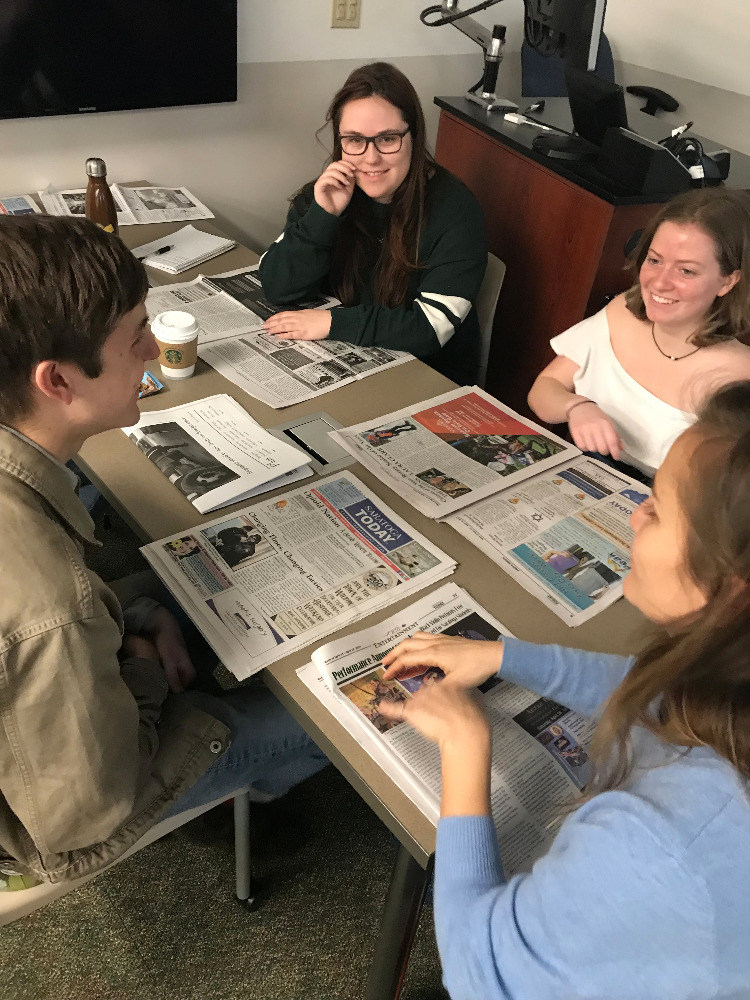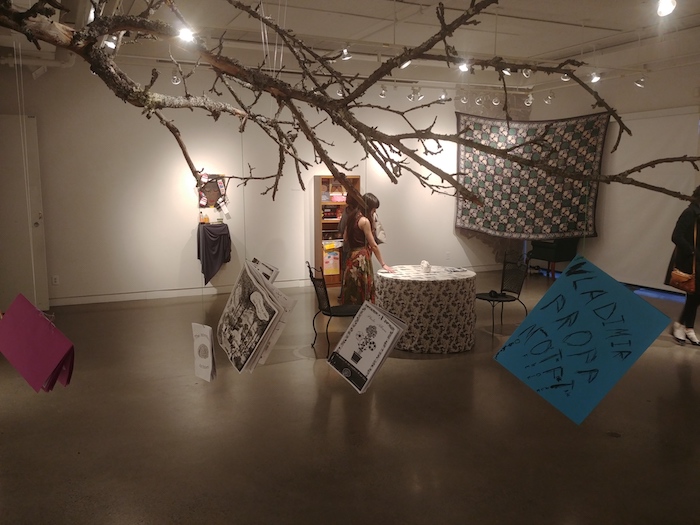Courses Push the Boundaries of Doc
“A lot of professors in the MDOCS department have full-fledged careers outside of being a Professor and what I find so valuable about that is that they bring that experience into the classroom and it really feels like you’re talking to someone who has been there in the field and has the experience to share with you.”Eleanor Green
“I think it’s a program that’s so expansive in terms of experiences you can have. If you’re interested in being a cameraman you can learn all skills needed to hold a camera and take a good image, but if you’re interested in telling a story and what it means to have a good interview and edit and create a storyboard but also find the right audience – MDOCS allows you to do everything that’s related to film, media and documentary. You meet people from different parts of the world, you see work from different parts of the world, which I think is the most important. To be exposed to the work that’s being done outside of Skidmore, outside of Saratoga and see who you can become. And I think MDOCS allows us at an undergraduate level to use equipment and use resources to see who we can become using the power of media.“Urvi Kalra
Testing the Limits of Doc Film

"Our multi-hour sessions afforded a more in-depth experience with each visiting documentarian/curator than any other lecture or workshop I've had the pleasure to attend. The class imbued me with a renewed love of documentary film, complete with a trained critical eye. It was a real treat to work with such a varied group of creators and gain wisdom from them, especially given that the majority openly described all aspects of their filmmaking process with honesty and respect for us as learners. Skidmore would do well to host more courses in this vein of thought, structure, and style." - Testimonial from student
Creative Research, Multimedia Storytelling
Then, working from the results of their personal inquiry, students will employ a range of expressive media (presumably working largely with whatever media they are already most comfortable) to produce 3 creative projects, in 3 distinct modalities: an object (e.g. a poster, broadsheet, pamphlet, zine, assemblage, or display cabinet), a spatial work (e.g. a gallery installation, a virtual reality space, a site-specific intervention, or an augmented reality mobile experience), and a time-based work (e.g. a film, podcast, or performance).

Palestinian Voices
It's not really boundary pushing, but MDOCS events ...
"The Palestinian Voice Series was a semester-long event series that carved out an
unique and dynamic space on campus for students and faculty to engage with the work
of Palestinian media artists, scholars, and filmmakers, as they shed their own light
on the Israeli-Palestinian conflict. This series provided an interdisciplinary, artistic,
and educational platform for Palestinian stories and voices to be heard and nurtured
on our own campus, in a way that many of us have never seen before at Skidmore. It
empowered me particularly as an American Jew on-campus, whose education growing up
surrounding the Israeli-Palestinian conflict often only centered Jewish Israeli voices
and opinions. I felt encouraged to step outside of the paradigm I was exposed to and
engage in a larger, more nuanced conversation between myself and others within and
beyond the Skidmore Jewish community about Israel-Palestine.
One of the most powerful aspects of the series was the way it challenged each of us,
from our own positionality in this complicated conflict, to begin to deconstruct the
narratives we were taught about this conflict and begin to open ourselves to the many
Palestinian perspectives and voices that exist. Each of these events, particularly
the Student Films from Palestine screening, gave the Skidmore community a rich glimpse
into the multi-faceted lives and stories told and represented by Palestinians themselves.
This event as well as others in the series, asked of students and faculty, especially
those in the fields dealing with representation and truth telling, to hold a mirror
to ourselves and the mediums in which we are attempting to represent the world through.
As an aspiring documentary storyteller who is invested in using multimedia as a tool
for justice and healing, I was inspired by Palestinian filmmaker Baha Abu Shanab as
well as Palestinian scholar Issam Nassar, in their work and sentiments surrounding
“decolonizing” the ways in which we all represent, capture, and consume the stories
of Palestinians in Israel-Palestine. Through education and storytelling, this series
served as a powerful launching pad towards more inclusive and nuanced discussions
as well as community building on Skidmore’s campus that may not have existed prior.
" - Amanda Peckler, '20
